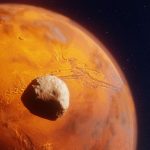Key Takeaways:
- Astronomers discovered a record-breaking number of rogue planets, at least 70, in the Milky Way.
- Rogue planets are planets that travel alone in space, not bound to any stars.
- This discovery was possible by combining data from multiple telescopes over 20 years.
- Scientists are unsure of the origin of rogue planets, but they may have formed on their own or been ejected from a star system.
- More powerful telescopes are being built to study rogue planets in more detail.
Rogue planets don’t play by the rules. These free floaters aren’t bound to a host star; instead, they travel the universe on their own.
Although there is still much to learn about these rebellious planets, astronomers may be able to expand their knowledge thanks to a recent discovery. An international team of astronomers used data from multiple telescopes to find the greatest known group of rogue planets—at least 70—in the Milky Way.
It was discovered, according to a study by a team of researchers that was published on Wednesday in the journal Nature Astronomy.
Astronomers search the universe for exoplanets by waiting for a decrease in a star’s light, which occurs when a planet is transiting the star.
In 2009, NASA launched the Kepler space telescope to search for planets similar to Earth orbiting various stars. However, in 2012, a planetary-mass object that was floating free and about 100 light years from Earth was discovered by the telescope.
The first rogue planet found was CFBDSIR2149, whose close proximity to Earth allowed astronomers to gain more insight into these planetary anomalies.

Planets that are rogue—also known to as free-floating, nomad, or orphan planets—travel the universe without orbiting any stars. Astronomers found an Earth-sized rogue world in the galaxy in October 2020, and despite all odds, some scientists think these planets may even be able to support life.
The Milky Way may contain a large number of rogue planets, but they are difficult to locate because they barely emit any light and do not pass in front of stars that are visible to us on Earth.
Rather, rogue planets are typically found by astronomers using microlensing. This technique bends light in a way that can reveal a planet’s mass by using a background object as a magnifying lens when a foreground object moves in front of it.
The recent discovery was made possible by a team that combined tens of thousands of wide-field images with data spanning 20 years from several ground-based and space telescopes, including the European Space Observatory’s Very Large Telescope in Chile and the European Space Agency’s Gaia satellite.
They observed the motion and luminosity of millions of sources that appeared in the data.
Up to 170 candidate planets and at least 70 rogue planets were discovered by the researchers. The Scorpius and Ophiuchus constellations contain a star-forming region close to the Sun where the team discovered these free-floaters.

Núria Miret-Roig, the lead author of the new study and an astronomer at the Laboratoire d’Astrophysique de Bordeaux, France and the University of Vienna, Austria, said in a statement, “We did not know how many to expect and are excited to have found so many.”
There may be a large number of these planets traveling the galaxy, according to the recent discovery. However, scientists are still not sure of their origin.
Rogue planets could have formed the same way stars do — from a cloud of gas and dust — and just exist on their own, or they could have once been a part of a star system before getting ejected.
Without a star to orbit, these planets go about their business independently, orbiting around the center of a galaxy much as stars do.
The team is hoping to learn more about the origins and formation and evolution of these numerous rogue planets by examining them.
Their hopes are focused on ESO’s upcoming Extremely Large Telescope (ELT), which is expected to begin observations later this decade and is presently being built in the Atacama Desert of Chile.
Hervé Bouy, the project leader of the new research and an astronomer at the Laboratoire d’Astrophysique de Bordeaux, France, said in a statement that “these objects are extremely faint and little can be done to study them with current facilities.” “The ELT will be absolutely crucial to gathering more information about most of the rogue planets we have found.”
The Nancy Grace Roman Space Telescope, scheduled for launch by NASA in 2027, will also be equipped with the necessary instruments to look for these free-floaters.

